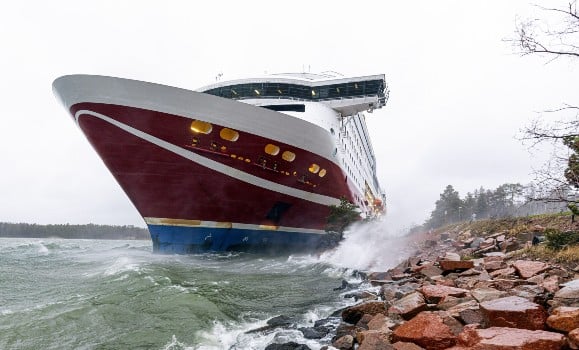“So much new evidence has emerged in recent years that we no longer have even the slightest doubt that the international report and its conclusions compiled and published in 1997 did not indicate the true reasons why the ship sank,” Helje Kaskel, head of the Estonia Litigation Association, told AFP Friday.
The association of victims’ relatives will Sunday launch a week-long publicity campaign to highlight why a new international investigation is needed, she said.
The ferry Estonia sank on the night of September 28, 1994, as it sailed from the Estonian capital Tallinn to Stockholm in Sweden.
All but 137 of the 989 passengers and crew on board perished.
Lennart Berglund, chair of the Sweden-based Stiftelsen för Estoniaoffren och Anhöriga (‘Foundation for the Relatives of the Estonia Victims’ – SEA), said his group supports efforts from counterpart organizations in Estonia to bring attention back to some of the unanswered questions surrounding the Estonian disaster.
His group has demanded that the victims be retrieved from the wreck and has long called for additional efforts to gather more evidence about what caused the Estonia to sink.
“We’ve been trying to work with politicians and authorities in Sweden to get them to authorize the gathering of more evidence,” he told The Local.
According to Bergland, Estonia had indicated it was open to returning to the site of the wreck to search for new evidence, something Swedish authorities have refused.
“Why the Swedish authorities are so unwilling to cooperate, we have no idea.”
An international probe in 1997 ruled that faulty bow doors which gave way in a storm had caused the accident, the worst in the Baltic in peace time.
But both Estonia and Sweden opened new investigations in 2005 after many relatives of the dead, shipping experts and politicians claimed the ferry went down following an explosion.
An acknowledgment by Sweden that Soviet military equipment had been transported on the ferry on several occasions in 1994 gave credence to the theory.
Estonia had broken free from the crumbling Soviet Union in 1991, but the Red Army only left the country on August 31, 1994.
The Estonian report, issued in 2007, said that chemical analyzes had ruled out an explosion, at least near the bow doors.
But Kaskel, whose organization groups victims’ relatives, said the use of the ferry to transport Soviet equipment to unknown recipients remained “among the most disturbing information” to have emerged.
The Estonian probe, led by state prosecutor Margus Kurm, had taken issue with several areas of the 1997 report.
Kurm’s report included testimony from two crew members who said that the car-deck ramp remained closed, raising the question of why divers found water on the deck below.
“Until it’s known when and how the water got below the car deck, it is not possible to describe the sinking of the ship accurately,” Kurm told AFP this week.
Kurm also complained that Swedish authorities had consistently rejected his request to meet the Swedish divers who observed and filmed the wreck in 1994, before the access to the underwater grave site was permanently prohibited.
Fuelling theories about the sinking is the fact the United States has acknowledged it holds documents about the disaster but that they cannot be released for security reasons.
There have even been suggestions that the ferry could have collided with a submarine. There were NATO manoeuvres in the Baltic at the time
But Kari Lehtola, a Finnish member of the 1997 probe team, has said there are no unanswered questions.
“When catastrophes occur, people feel a need to find someone to blame,” Lehtola was quoted as saying recently in the Estonian daily Postimees.



 Please whitelist us to continue reading.
Please whitelist us to continue reading.